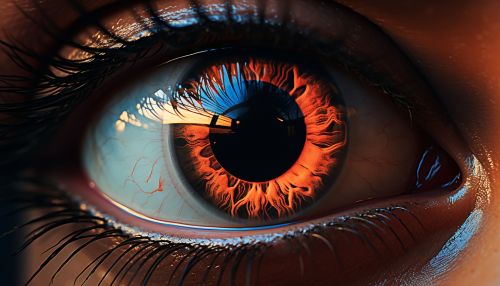Age-related macular degeneration
Introduction
Age-related macular degeneration (AMD) is a medical condition which usually affects older adults and results in a loss of vision in the center of the visual field (the macula) because of damage to the retina. It is a major cause of blindness and visual impairment in older adults (>50 years). Macular degeneration can make it difficult or impossible to read or recognize faces, although enough peripheral vision remains to allow other activities of daily life.
Types of AMD
There are two types of AMD, namely dry (non-neovascular) and wet (neovascular).
Dry AMD
Dry AMD is a chronic eye disease that causes vision loss in the center of your field of vision. Dry AMD is marked by deterioration of the macula, which is in the center of the retina — the layer of tissue on the inside back wall of your eyeball.
Wet AMD
Wet AMD is a chronic eye disorder that causes blurred vision or a blind spot in your visual field. It's generally caused by abnormal blood vessels that leak fluid or blood into the region of the macula (NEI, 2019).
Risk Factors
Several risk factors are associated with AMD, including age, smoking, race, family history and genetics, diet, obesity, cardiovascular disease, and hypertension.
Symptoms
Some common symptoms of AMD include blurred or fuzzy vision, straight lines appearing wavy, difficulty seeing at a distance, and difficulty distinguishing colors.
Diagnosis
AMD is diagnosed through a comprehensive eye exam that includes a visual acuity test, dilated eye exam, and tonometry.
Treatment
There is no cure for AMD, but it can be managed with the right approach. Treatment options for AMD include anti-VEGF drugs, laser therapy, photodynamic laser therapy, and low vision aids.
Prevention
While it is not always possible to prevent AMD, there are steps you can take to reduce your risk. This includes regular exercise, a healthy diet, not smoking, and regular eye exams.
Research
Research into potential treatments for AMD is ongoing. Current research directions include studying the role of oxidative stress, inflammation, and genetic factors in the development of AMD.


